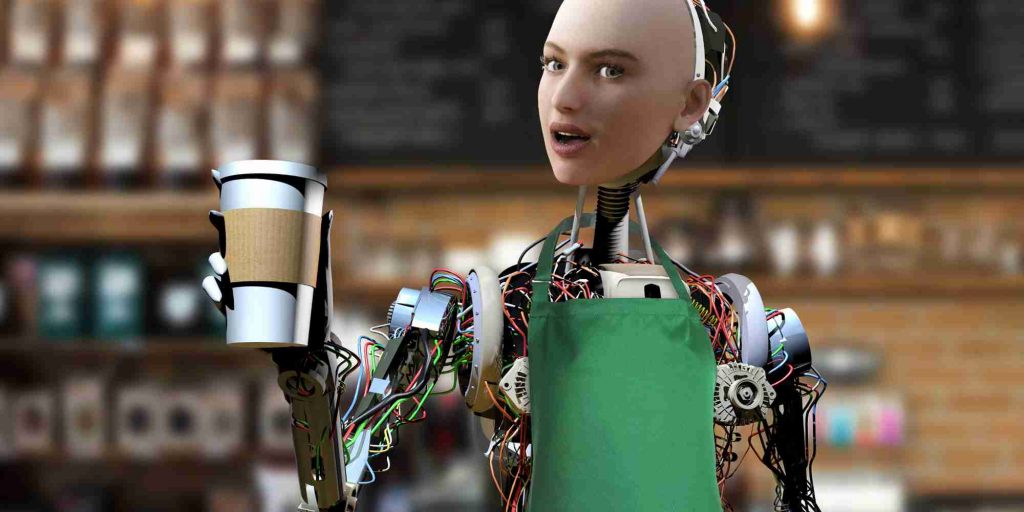The restaurant industry is currently facing some simultaneous challenges. For instance, restaurant brands must:
- Stand out from the (stiff) competition. Today’s restaurants face increased competition, not just from other brick-and-mortar establishments but also from non-traditional dining options like ghost kitchens and virtual brands. Restaurant brands need to differentiate themselves to attract customers and maximize sales.
- Meet changing consumer preferences. Last year’s hot trends (like pickletinis and Sriracha variations) might be cooling down moving forward. Therefore, restaurants must stay aware of consumers’ ever-changing demands – and be nimble and adaptable enough to give them exactly what they want. Otherwise, customers will go elsewhere to find it.
- Attract and retain talented staff. Even several years post-pandemic, many restaurants are still struggling with ongoing staffing shortages. Since there’s increased competition for employees, restaurant brands must go above and beyond to attract and retain talent in this extremely competitive environment.
- Keep up with ever-evolving regulatory compliance. Restaurants must maintain compliance with health and safety regulations, especially in a post-pandemic world where everyone’s watching to make sure your staff is following safety protocols and keeping your space immaculate.
To overcome these challenges, restaurants (and other food businesses) should rely on the latest technologies, including Artificial Intelligence (AI), Machine Learning (ML), and the Internet of Things (IoT).

Technology can help restaurants:
- Optimize operations. When restaurants implement digital solutions, it helps improve all elements of their operations, including scheduling, ordering, and reservations, as well as back-end systems for kitchen and inventory management. Integrated tech systems help improve efficiency, accuracy, transparency, productivity, and other critical success metrics. As a result, restaurants can drive key performance metrics (KPIs), such as customer satisfaction, loyalty, retention, and referrals.
- Elevate their quality and compliance management programs. Restaurants must prioritize safety, quality and compliance every day – no matter what. Tech solutions are exponentially better than antiquated manual systems for this effort. Utilize digital systems for continuous monitoring and improvement of quality control in restaurants. Quality management software allows brands to maintain compliance with health and safety regulations, manage supplier relationships, and ensure consistent quality across multiple locations. Leverage fully featured software options, which offer audit management and compliance tracking capabilities to maximize the safety of your food, guests, and business.
- Maximize compliance. Restaurants need to do more than just put safety and quality protocols in place – they must also ensure compliance across all shifts, and all locations. Modern audit management and compliance tracking features ensure adherence to health and safety standards. Fully featured platforms also assist in managing supplier quality, which is critical, given the necessary focus on safety, quality, compliance, sustainability and ethical sourcing.
- Manage ongoing staff issues. Being short-staffed can jeopardize restaurants’ safety and quality efforts. Harried employees working a chaotic dinner shift may skip steps in your safety protocols because they believe they’re “too busy” to wash their hands often, check foods’ temperatures regularly, or properly disinfect surfaces or equipment throughout their shift. Tech solutions can help boost efficiency and productivity so your restaurant can do more, even with fewer employees. Additionally, offering innovative tech tools to make employees’ jobs easier can be an attractive incentive to attract and retain staff.
- Give the people what they want. Whether your customers want healthier menu items, more sustainable takeout packaging, online ordering, an improved guest experience, ethical sourcing, or all of the above, leverage tech tools to meet their demands – and exceed their expectations. Tech tools can help personalize service, recommend meals based on guests’ purchase history, improve sustainability efforts, and much more. As a result, your brand can enhance guests’ experiences and keep them coming back for more.
- Boost sustainability efforts. Did you know that 82% of consumers want brands to support sustainable practices and 84% of customers would avoid a company with poor environmental practices? As more consumers demand sustainability – and more brands recognize that it’s the right way to do business – many restaurants are prioritizing eco-friendly practices. Increasingly, food businesses are relying on tech tools to help them reduce waste (and related spending), find more efficient delivery routes to reduce emissions, and improve sustainability in other ways, as well.
- Enhance the customer experience. Restaurants – and other hospitality businesses – are learning that tech tools can dramatically enhance the customer experience. From digital menus and online ordering systems to AI-driven kitchen automation, technology is revolutionizing the dining experience and boosting customer service innovation. AI-powered tools have also become instrumental in responding to customers’ comments, questions, and inquiries promptly and accurately, boosting the customer experience and freeing up employees to focus on other customer-facing tasks.

Tech tools have evolved from “nice to have” to essential for today’s restaurants, and are critical in helping restaurants adapt to today’s most pressing challenges. For instance, innovative technologies are instrumental in helping restaurants and other food brands enhance their safety and quality programs. Using quality management systems, restaurants can identify and resolve any risks, improve compliance, and maintain operational excellence.
Today’s innovative technologies help restaurants optimize operations, improve sustainability efforts, deliver exceptional customer experiences, and set themselves apart from the competition. These solutions will help restaurants remain relevant, profitable, and competitive in this increasingly crowded marketplace.




